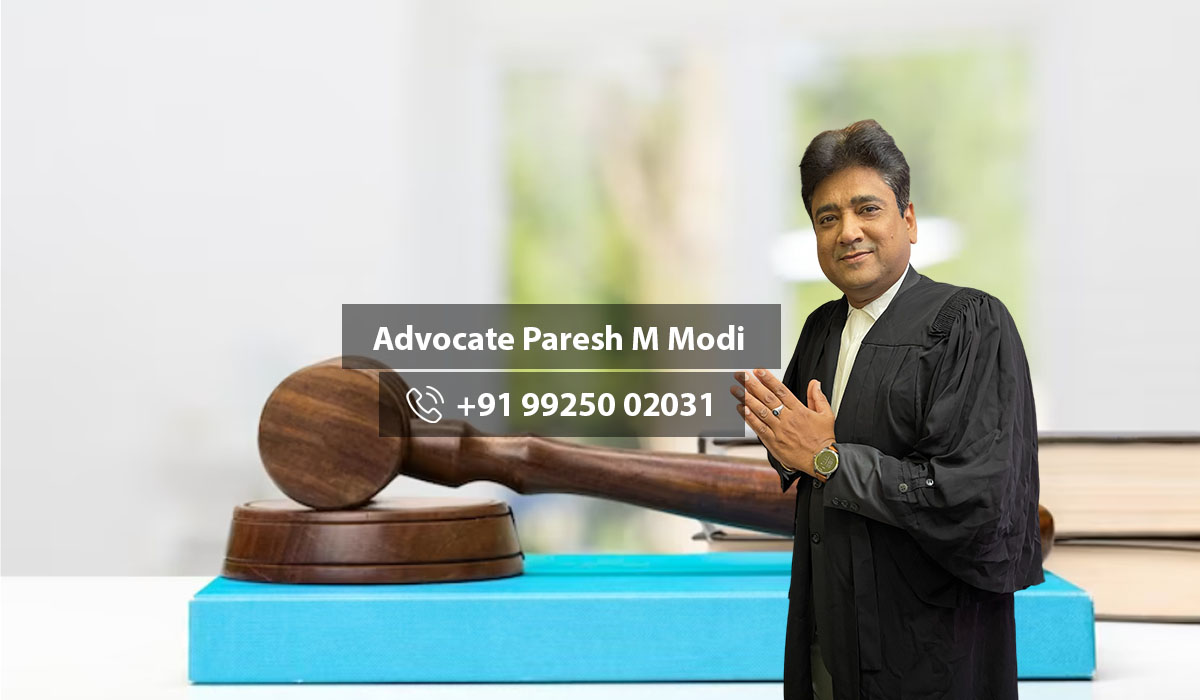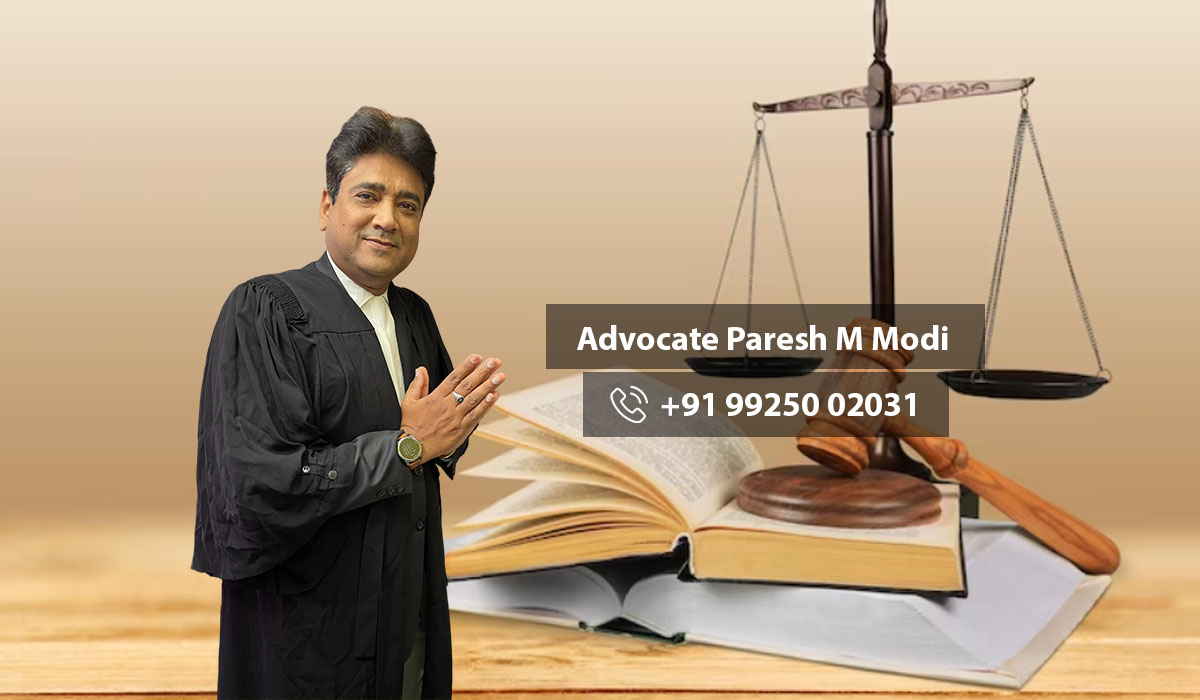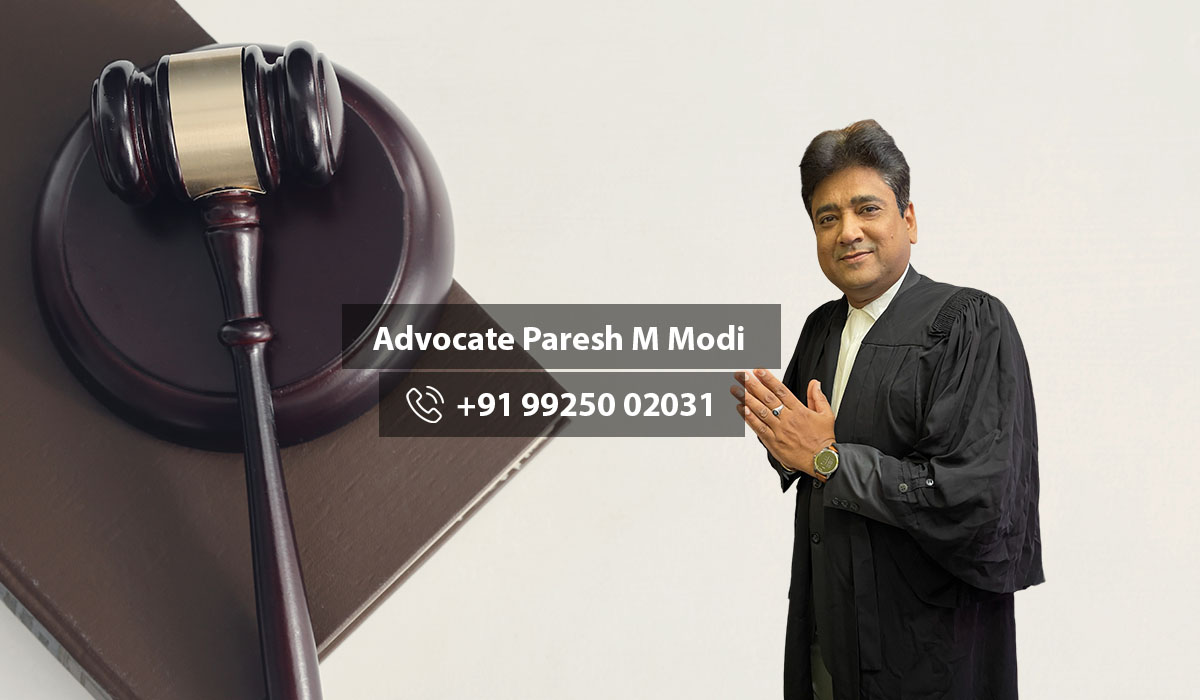Satender Kumar Antil v. CBI | Landmark Judgment with Guidelines and Directions | Advocate Paresh M Modi
In the landmark judgment of Satender Kumar Antil v. Central Bureau of Investigation, delivered on July 11, 2022, the Supreme Court of India addressed critical issues concerning the grant of bail and the overarching principle that “bail is the rule, jail is the exception.” This judgment emphasizes the importance of personal liberty and aims to rectify the inconsistencies and arbitrariness prevalent in the bail system.
Key Observations:
Overcrowding of Prisons: The Court noted the alarming rate of overcrowding in prisons, primarily due to the unnecessary arrests and the mechanical denial of bail.
Need for Reform: Emphasizing the need for a systemic overhaul, the Court highlighted that the existing framework often leads to prolonged incarceration of undertrial prisoners, infringing upon their fundamental rights.
Guidelines and Directions Issued:
Categorization of Offenses for Bail Purposes:
- Category A: Offenses punishable with imprisonment of 7 years or less.
- Category B: Offenses punishable with imprisonment exceeding 7 years.
- Category C: Offenses punishable under Special Acts containing stringent bail provisions.
- Category D: Economic offenses not covered by Special Acts.
Procedure for Category A Offenses:
- Notice of Appearance: For offenses punishable up to 7 years, the Court directed that upon filing of the charge sheet without arrest, the accused should be issued a notice to appear before the Court.
- Bail on Appearance: Upon appearance, the accused should ordinarily be granted bail, except in cases involving heinous crimes or where the accused is a flight risk.
Enforcement of Sections 41 and 41A of CrPC:
- Section 41: Police officers must not arrest an individual for offenses punishable with imprisonment up to 7 years unless there is a necessity for arrest.
- Section 41A: A notice of appearance should be served to the accused in cases where arrest is not warranted.
- Accountability: Non-compliance with these provisions should lead to departmental action and may also affect the validity of the judicial proceedings.
Bail Application Disposal:
- Timely Decisions: Courts are directed to decide on bail applications expeditiously, preferably within a period of two weeks from the date of the first hearing.
Special Acts with Stringent Provisions:
- Adherence to Statutory Conditions: For offenses under Special Acts like NDPS, PMLA, UAPA, etc., the conditions laid down under the respective statutes for grant of bail must be strictly adhered to.
Direction to High Courts:
- Implementation Committees: High Courts are advised to establish special committees to oversee the implementation of the guidelines and to ensure that subordinate courts comply with the principles laid down.
This judgment serves as a significant step towards ensuring that the right to personal liberty is upheld and that the process of granting bail is streamlined, reducing unnecessary incarcerations.
સુપ્રિમ કોર્ટનો મહત્વપૂર્ણ ચુકાદો: સતીન્દ્ર કુમાર અંટીલ વી. સેન્ટ્રલ બ્યુરો ઓફ ઇન્વેસ્ટિગેશન | Advocate Paresh M Modi
સતીન્દ્ર કુમાર અંટીલ વી. સેન્ટ્રલ બ્યુરો ઓફ ઇન્વેસ્ટિગેશન કેસમાં, 11 જુલાઈ, 2022ના રોજ સુપ્રિમ કોર્ટએ જામીન આપવાના મુદ્દાઓ અને “જામીન નિયમ છે, જેલ અપવાદ છે” ના સિદ્ધાંત પર મહત્વપૂર્ણ નિર્દેશો આપ્યા છે. આ ચુકાદો વ્યક્તિગત સ્વતંત્રતાની મહત્વતા પર ભાર મૂકે છે અને જામીન પ્રણાલીમાં રહેલી અનિયમિતતાઓ અને મનસ્વીતા દૂર કરવા માટે પ્રયત્ન કરે છે.
મુખ્ય નિરીક્ષણો:
કારાગૃહોની ભીડ: કોર્ટએ નોંધ્યું કે અનાવશ્યક ધરપકડ અને જામીનના યાંત્રિક ઇન્કારને કારણે જેલોમાં ભીડ વધતી જાય છે.
સુધારાની જરૂર: કોર્ટએ ભારપૂર્વક જણાવ્યું કે વર્તમાન પ્રણાલી ઘણી વખત અંડરટ્રાયલ કેદીઓની લાંબી કેદને કારણે તેમના મૂળભૂત અધિકારોનું ઉલ્લંઘન કરે છે, તેથી સિસ્ટમેટિક સુધારાની જરૂર છે.
જારી કરાયેલા માર્ગદર્શિકા અને નિર્દેશો:
ગુંનાઓનું વર્ગીકરણ:
- વર્ગ A: 7 વર્ષ અથવા ઓછા સજા પાત્ર ગુનાઓ.
- વર્ગ B: 7 વર્ષથી વધુ સજા પાત્ર ગુનાઓ.
- વર્ગ C: વિશેષ કાયદાઓ હેઠળના ગુનાઓ, જેમાં કડક જામીન પ્રાવધાન છે.
- વર્ગ D: આર્થિક ગુનાઓ, જે વિશેષ કાયદાઓ હેઠળ આવરી લેવાતા નથી.
વર્ગ A ગુનાઓ માટેની પ્રક્રિયા:
- હાજરી માટે નોટિસ: જો ચાર્જશીટ દાખલ થાય છે અને ધરપકડ નથી કરવામાં આવી, તો આરોપીને કોર્ટમાં હાજર થવા માટે નોટિસ આપવામાં આવશે.
- હાજરી પર જામીન: આરોપી હાજર થાય ત્યારે, સામાન્ય રીતે તેને જામીન આપવામાં આવશે, સિવાય કે ગુનો ગંભીર હોય અથવા આરોપી ભાગી જવાની શક્યતા હોય.
CrPCની કલમ 41 અને 41Aનું અમલ:
- કલમ 41: 7 વર્ષ સુધીની સજાને પાત્ર ગુનાઓ માટે, પોલીસ અધિકારીએ ધરપકડ કરવાની યોગ્ય કારણો દર્શાવવી પડશે.
- કલમ 41A: ધરપકડની જરૂર ન હોય તો, આરોપીને નોટિસ આપી, તપાસ માટે હાજર થવા કહ્યું જવું જોઈએ.
- જવાબદારી: પોલીસ અધિકારી કે ન્યાયાધીશ આ નિયમોનું ઉલ્લંઘન કરે તો, તેમના પર શિસ્તભંગની કાર્યવાહી થઈ શકે છે.
જામીન અરજીની કાર્યવાહી:
- સમયમર્યાદા: સુપ્રીમ કોર્ટએ સ્પષ્ટ કર્યું કે જામીન અરજીની સુનાવણી બે અઠવાડિયાના અંદર પુરી થવી જોઈએ.
- અંડરટ્રાયલ કેદીઓને રાહત: ખાસ કરીને નાના ગુનાઓમાં, જો આરોપી લાંબા સમયથી જેલમાં હોય અને કેસ વિલંબિત છે, તો તેને જામીન મળવા જોઈએ.
વિશિષ્ટ કાયદાઓ હેઠળના ગુનાઓ (Special Acts):
- મજબૂત શરતો: NDPS, PMLA, UAPA, SC/ST Atrocities Act જેવા કાયદાઓ હેઠળના ગુનાઓ માટે, કડક શરતોનું પાલન જરુરી છે.
- SEBI અને આર્થિક ગુનાઓ: આર્થિક ગુનાઓ માટે FEMA, SEBI Act અને PMLA Act મુજબ, પુરાવા પૂરતા ન હોય તો આરોપી જામીન મેળવી શકે છે.
હાઇકોર્ટ માટેના નિર્દેશો:
- અમેલકમેટી બનાવવી: હાઇકોર્ટોએ વિશેષ સમિતિઓ બનાવવી, જે નીચેની કોર્ટોના કામકાજ પર દેખરેખ રાખે.
- જામીન પદ્ધતિમાં સુધારો: હાઇકોર્ટોએ નીચેની કોર્ટોનું માર્ગદર્શન કરવું કે તેઓ જામીન અપેક્ષાના માપદંડોનું પાલન કરે.
સતિન્દ્ર કુમાર અંટીલ ચુકાદાનું મહત્ત્વ
આ ચુકાદા દ્વારા, સુપ્રીમ કોર્ટએ “Bail is the Rule, Jail is the Exception” ના સિદ્ધાંતને વધુ મજબૂત બનાવ્યો છે. કોર્ટએ નોંધ્યું કે વિના કારણ ધરપકડ અને જામીન ન મળવા કારણેઅવધિગત કેદીઓની સંખ્યા વધી રહી છે, જે મૂળભૂત અધિકારનું ઉલ્લંઘન છે.
આ ચુકાદા પછી, જામીન પ્રક્રિયા વધુ પારદર્શક અને ઝડપભરી થવાની આશા છે, અને કાયદાનો દુરૂપયોગ અટકાવી શકાશે.
Advocate Paresh M Modi – High Court Bail Case Expert
જો તમે જામીન સંબંધિત કોઇ પણ કાયદાકીય મદદ શોધી રહ્યા હો, તો એડવોકેટ પરેશ એમ મોદી તમારા માટે યોગ્ય સલાહકાર છે.
- Mobile: +91 9925002031 (Only WhatsApp sms – Timing 9 am to 9 pm)
- Office Landline: +91-79-48001468 (For Appointment Only – Timing 10.30 am to 6.30 pm – On Working Days)
- Email: advocatepmmodi@gmail.com
- Website: www.advocatepmmodi.in
- Office Address: Office No. C/112, Supath-2 Complex, Opp. Kohinoor Plaza Hotel, Near Old Wadaj Bus Stand, Ashram Road, Ahmedabad – 380013, Gujarat, India.





